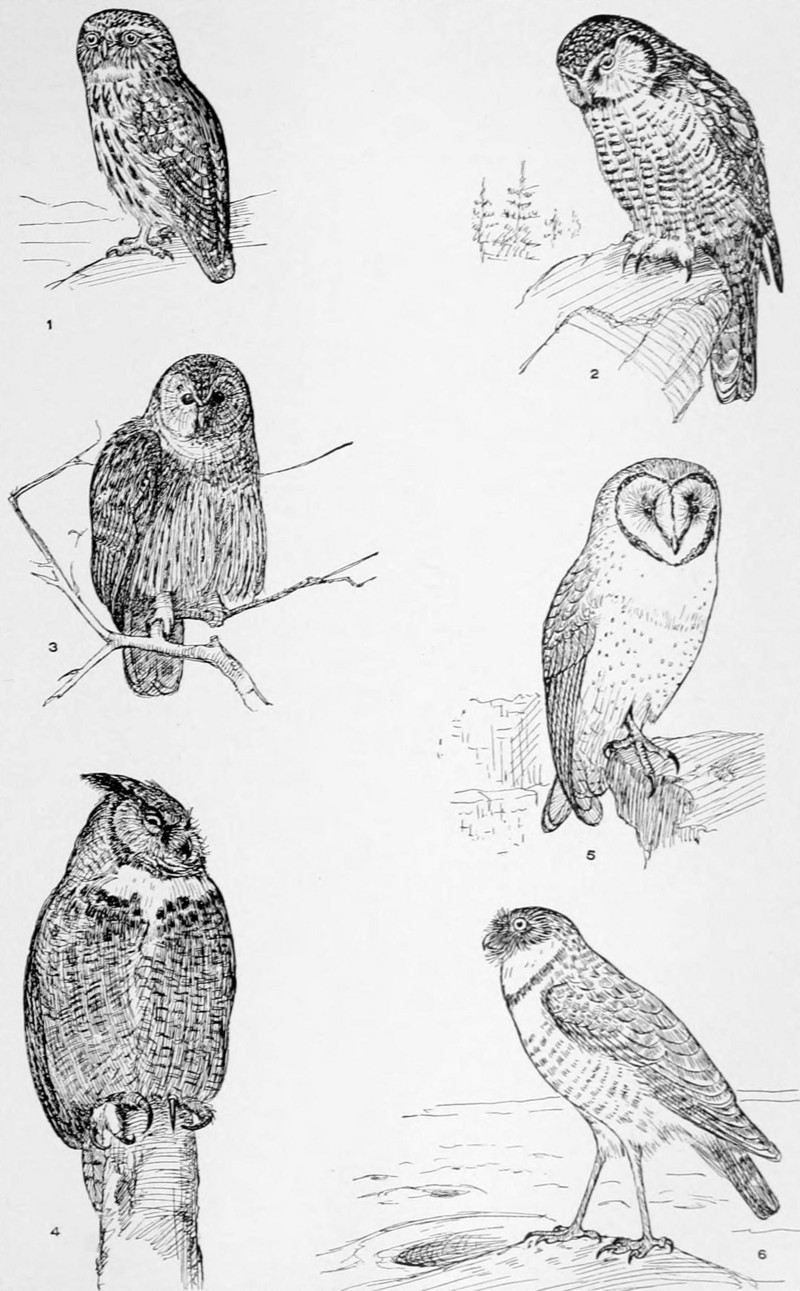|
| Query: hawk | Result: 270th of 1307 | |
REPRESENTATIVE OWLS: little owl (Athene noctua), northern hawk-owl (Surnia ulula), barred owl (Strix varia), great horned owl (Bubo virginianus), barn owl (Tyto alba), burrowing owl (Athene cunicularia)
| Subject: | REPRESENTATIVE OWLS: little owl (Athene noctua), northern hawk-owl (Surnia ulula), barred owl (Strix varia), great horned owl (Bubo virginianus), barn owl (Tyto alba), burrowing owl (Athene cunicularia)
| | Poster: | Wiki Photos (---@---.---)
| |

| Resolution: 1479x2387
File Size: 408539 Bytes
Upload Date: 2017:04:12 23:22:57
|
Drawings of six representative owls.
Date published 1905
Source The New International Encyclopædia, v. 15, 1905, facing p. 172.
Author unknown artist; article is by Ernest Ingersoll and Hubert Lyman Clark
Source: https://commons.wikimedia.org/wiki/File:NIE_1905_Owl_-_representative_owls.jpg
REPRESENTATIVE OWLS
1. LITTLE OWL of Europe (Carine noctua); symbol of Pallas Athene. = little owl (Athene noctua)
2. HAWK OWL (Surnia ulula). = northern hawk-owl (Surnia ulula)
3. BARRED OWL (Syrnium, or Scotiaptex nebulosum). = barred owl (Strix varia)
4. GREAT HORNED OWL (Bubo Virginianus); type of Eagle Owls. = great horned owl (Bubo virginianus)
5. BARN OWL (Strix flammea). = barn owl (Tyto alba)
6. BURROWING OWL (Speotyto cunicularia). = burrowing owl (Athene cunicularia)
The little owl (Athene noctua) is a bird that inhabits much of the temperate and warmer parts of Europe, Asia east to Korea, and north Africa. This owl is a member of the typical or true owl family, Strigidae.
The northern hawk-owl or simply hawk owl (Surnia ulula) is a non-migratory owl that usually stays within its breeding range. It is one of the few owls that is neither nocturnal nor crepuscular, being active only during the day. This is the only living species in the genus Surnia of the family Strigidae.
The barred owl (Strix varia) is a large typical owl native to North America. Best known as the hoot owl for its distinctive call, it goes by many other names, including eight hooter, rain owl, wood owl, and striped owl.
The great horned owl (Bubo virginianus), also known as the tiger owl (originally derived from early naturalists' description as the "winged tiger" or "tiger of the air") or the hoot owl, is a large owl native to the Americas.
The barn owl (Tyto alba) is the most widely distributed species of owl and one of the most widespread of all birds. It is also referred to as the common barn owl, to distinguish it from other species in its family, Tytonidae.
The burrowing owl (Athene cunicularia) is a small, long-legged owl found throughout open landscapes of North and South America. Burrowing owls can be found in grasslands, rangelands, agricultural areas, deserts, or any other open dry area with low vegetation. |
^o^
Animal Pictures Archive for smart phones
^o^
|
|